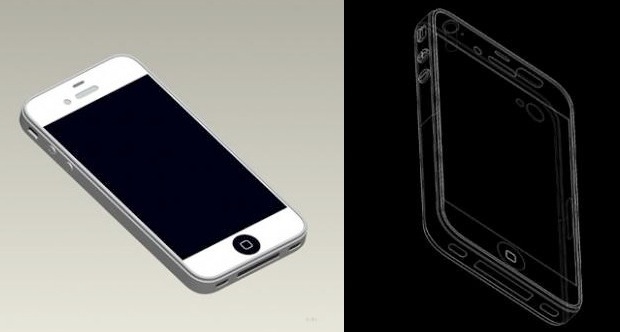How To Restart An Iphone S

It may be iPad 2 day, but that doesn't stop the Apple news mill from grinding–now there's a fresh leak from China that hints what the iPhone 5 may look like. It's convincing.
The images are of a purported engineering drawing of the iPhone 5 that's been circulated ahead of the actual device's release (in three months or so?). They're renderings, so potentially very easy to fake, but they really have a ring of authority. What can we learn from them? Apple is embracing big-screen thinking to match up to the increasing number of Android devices that sport screens over 3.5 inches across diagonally.
In fact, if you peep at the drawings and make some scale guesses based on the existing iPhone 4, the screen on the iPhone 5 is close to 4 inches in size. It's much bigger, and requires a slimmer bezel that places the screen as filling the iPhone's top surface practically edge-to-edge. Better yet, this tallies with another alleged leak from inside Apple's Chinese supply chain that revealed a bezel for the next iPhone–it almost identically matches this new drawing.

We can make the guess about the phone's screen size from this leaked bezel, and also thanks to one big design hint we're seeing here: The iPhone 5 is essentially the same as the iPhone 4. This makes good sense. Apple included some revolutionary design decisions in the current iPhone, and would be unlikely to step away from them so fast, partly thanks to the cash investment the iPhone 4's design must have required. We can also believe these really are design drawings, given to case and peripheral manufacturers, because many of the leaked case designs that arrived before the iPad 2 proved to be accurate–right down to the position of the buttons, ports, and speaker grilles.
But what about Antennagate? Apple seems to consider the matter closed, although it included some subtle antenna design tweaks in the recent Verizon CDMA version. It could easily evolve the antenna design further still for the iPhone 5 to ensure there's still less signal attenuation when users hold the phone. The all-metal rear chassis rumor from the other day isn't ruled out by this new information either, since it's entirely plausible Apple could replace the sheer glass rear face with a metal one to make the device slightly thinner, lighter, and potentially cheaper–the same design refinements that have just gone into the iPad 2.
This data, though easily dismissed, is actually interesting because Apple's smartphone will define the path that all the others will tread along this year, including the next batch of Android phones and anything Nokia comes up with (in collaboration with Microsoft) to try to revive its smartphone hopes. With news today that Nokia may have wasted 2,000 man years developing failed devices, this is important.
To read more news like this, follow Fast Company on Twitter: Click here.
To read more about Apple, click here.
How To Restart An Iphone S
Source: https://www.fastcompany.com/1737641/iphone-5
Posted by: johnsonrigh1962.blogspot.com

0 Response to "How To Restart An Iphone S"
Post a Comment